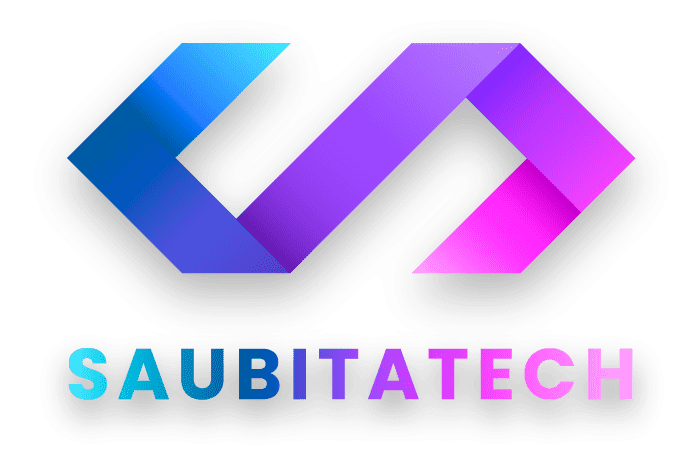The pandemic fundamentally changed how we work and hire, accelerating the shift to remote operations across industries. While many organizations initially viewed remote hiring as a temporary solution, it has now become a permanent component of modern workforce strategies.
At SaubitaTech, we understand that finding and retaining top talent in a remote setting requires a thoughtful, structured approach that balances technology, processes, and human connection. In this comprehensive guide, we explore remote hiring best practices in a post-pandemic world to help your business attract, evaluate, and onboard top talent effectively while preserving your company culture and driving productivity.
The Evolution of Remote Hiring
Before 2020, remote hiring was rare and mostly reserved for specific roles in technology or creative industries. The pandemic, however, forced companies worldwide to adapt quickly, proving that remote work is not only feasible but can enhance productivity and employee satisfaction.
Today, organizations across sectors, including technology, digital commerce, and AI-driven industries, embrace remote hiring as a core strategy to access global talent pools while reducing overhead costs and maintaining business continuity.
Benefits of Remote Hiring
- Access to a Wider Talent Pool
Remote hiring removes geographical barriers, allowing you to find the best talent regardless of location. - Cost Efficiency
Reducing the need for physical office space and relocation costs can save your business significant expenses. - Improved Employee Satisfaction
Remote work offers flexibility that many employees value, improving retention and productivity. - Business Continuity
Remote hiring ensures you can continue expanding your team without disruptions during uncertain times.
Challenges of Remote Hiring
While the benefits are clear, remote hiring also presents challenges, including:
- Building trust and rapport virtually
- Evaluating cultural fit remotely
- Navigating time zone differences
- Maintaining data security during hiring and onboarding
SaubitaTech helps businesses overcome these challenges by leveraging advanced digital and automation tools while maintaining a human-centric approach throughout the hiring journey.
Best Practices for Remote Hiring in 2025
1. Define Clear Job Requirements
Begin by creating clear, detailed job descriptions that outline:
- Role expectations
- Required skills and experience
- Remote work requirements, including time zone compatibility
- Communication and collaboration expectations
This clarity helps candidates understand if they are the right fit, reducing mismatched applications.
2. Leverage Technology for Virtual Hiring
Utilize video conferencing tools for interviews and collaborative platforms for assessments to streamline your remote hiring process.
At SaubitaTech, we integrate our website application development expertise to build custom portals for remote hiring, ensuring smooth candidate tracking, automated interview scheduling, and virtual onboarding workflows.
3. Optimize Your Recruitment Process
Speed and efficiency are crucial in a competitive talent market. Consider implementing:
- Applicant Tracking Systems (ATS) to manage candidate pipelines
- Automated screening to filter applicants efficiently
- AI-driven tools to match candidates with job requirements, reducing bias and increasing precision
Explore our AI and Robotic Process Automation (RPA) solutions to automate repetitive recruitment tasks, allowing your HR team to focus on meaningful interactions with candidates.
4. Structure Virtual Interviews Effectively
To ensure consistency and fairness:
- Prepare structured interview questions
- Use video interviews for assessing soft skills and cultural fit
- Include practical tests or coding assessments for technical roles
- Record interviews (with consent) for collaborative evaluation
Key Metrics to Measure RPO Success

5. Focus on Candidate Experience
A smooth and engaging hiring process reflects your company culture. Best practices include:
- Clear and timely communication
- Transparency regarding the interview process and timelines
- Providing feedback post-interview
This experience ensures candidates feel valued, improving your employer branding.
6. Prioritize Cultural Fit in a Remote Setting
Assessing cultural fit remotely requires creativity. Consider:
- Virtual team meetings with shortlisted candidates
- Informal video calls to assess interpersonal skills
- Sharing your company’s mission and values clearly during the process
At SaubitaTech, we ensure that cultural alignment is part of our recruitment process outsourcing services to help clients build cohesive, high-performing remote teams.
7. Ensure Data Security and Compliance
Remote hiring involves sharing sensitive personal data. Ensure compliance with data privacy regulations and invest in secure systems to protect candidate information throughout the hiring journey.
Onboarding Remote Employees Effectively
The post-pandemic world has proven that virtual onboarding can be effective if executed thoughtfully.
- Pre-Onboarding: Send equipment, login credentials, and onboarding documents before day one.
- Structured Onboarding Plans: Include training schedules, virtual team introductions, and goal-setting meetings.
- Mentorship: Assign a mentor or buddy to guide new hires during their first few weeks.
- Regular Check-Ins: Schedule consistent 1:1s to address concerns and provide support.
SaubitaTech also utilizes its mobile app development services to help businesses build customized onboarding apps, enhancing remote employee integration.
Building a Strong Remote Culture
A successful remote workforce thrives in a positive, engaging culture. Best practices include:
- Regular virtual team-building activities
- Clear communication policies and tools
- Transparent performance evaluation frameworks
- Encouraging work-life balance and flexibility
Using Digital Marketing to Support Remote Hiring
Attracting top talent remotely requires effective employer branding and digital presence. Using strategies from our digital commerce and marketing automation services, SaubitaTech helps businesses:
- Build and optimize career pages
- Leverage social media for recruitment marketing
- Run targeted ad campaigns to attract specific talent pools
- Automate candidate engagement using personalized campaigns
Measuring Remote Hiring Success
Key metrics to track include:
- Time-to-hire
- Cost-per-hire
- Candidate satisfaction rates
- Offer acceptance rates
- Retention rates of remote hires
These insights enable continuous improvement of your remote hiring processes, ensuring your strategies align with evolving market demands.
SaubitaTech: Your Partner in Remote Hiring Excellence
SaubitaTech is committed to helping businesses embrace remote hiring effectively. From technology integration to process optimization, our tailored solutions empower you to attract and retain the best talent while focusing on business growth.
Ready to refine your remote hiring strategy? Contact us through our contact page to get started.
Conclusion
The post-pandemic shift to remote hiring is more than a temporary adjustment—it is the future of workforce management. By adopting these best practices and leveraging advanced technology, your business can attract, evaluate, and retain top talent globally, ensuring sustainable growth and resilience.
SaubitaTech is here to support you at every stage, whether it’s developing hiring portals, automating recruitment processes, or optimizing your digital strategy to attract the right talent.
Remote hiring, when executed strategically, can supercharge your business in 2025 and beyond. Embrace these practices today to build a strong, agile, and future-ready workforce.
Additional Resources
For continuous learning and industry updates, explore the SaubitaTech blog section and stay ahead in technology and talent management trends.







